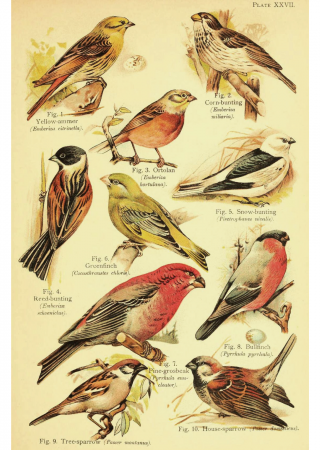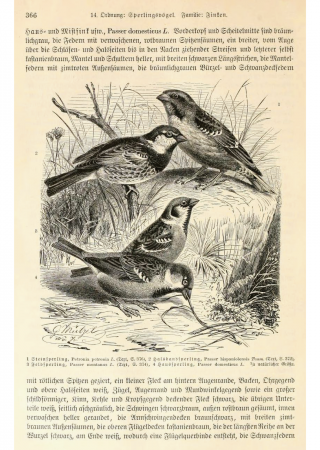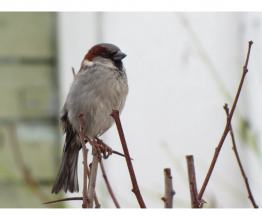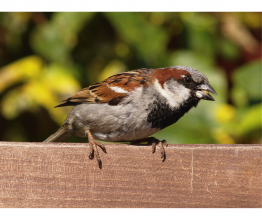House Sparrow
Passer domesticus
Did you know that… ?
- …in some places in Europe, the populations of house sparrows has declined dramatically over the last twenty years?
- …scientists distinguish twelve to seventeen subspecies of house sparrows?
- …males differ from females in having a black breast, black spots under their beaks and around their eyes, chestnut brown stripes on their heads and gray crown?
- …sparrows can drive other birds out of their nests, and then occupy them?
- …sparrow eggs were once sought after as an aphrodisiac?
General info
Phylum: Chordata
Class: Aves
Order: Passeriformes
Size: 16 cm, wingspan 18 cm
Food: seeds, insects
Habitat: near homes and buildings
Distribution: cosmopolitan
Relationship with humans: neutral
Biology
House sparrows are gregarious birds, living near humans. We may encounter them in cities, near houses, in gardens and in orchards. In winter, they often visit bird feeders, along with other birds. The eat seeds and small pods, but young birds are also fed insects. Sparrows nest in colonies, building nests from whatever material they find at hand, most often in holes in walls, among climbing plants or in tree hollows. Females lay eggs from April through August, three to five at a time, whitish and speckled, which hatch in around fourteen days. Both parents then care for the young. House sparrows can live up the thirteen years.




